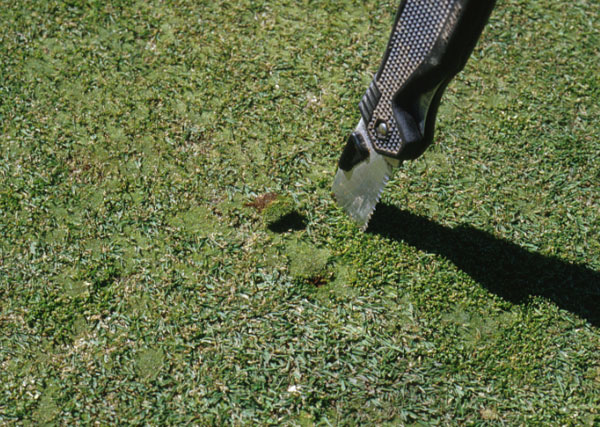I’ve gotten a number of questions about moss lately. Moss is becoming more common in greens as we decrease mowing heights and nitrogen fertility in pursuit of faster green speeds. Moss becomes more competitive as creeping bentgrass becomes less competitive. Though the herbicide QuickSilver has become the industry standard when applied at 6.7 oz/A, a recent article in the January edition of Golf Course Management showed that QuickSilver applied twice at 6.7 oz/A two weeks apart, then applying a light topdressing and/or 0.25 lbs N/1000 sq ft every other week for 10 weeks was most almost twice as effective as QuickSilver alone. This clearly demonstrates that the healthier the green after application, the less of a problem that moss will be. Be sure to read the label for full instructions and experiment on a small area first because your creeping bentgrass cultivar(s) and/or annual bluegrass may not be tolerant of QuickSilver.
 |
Sever infestation of moss in a thinning creeping bentgrass green. |